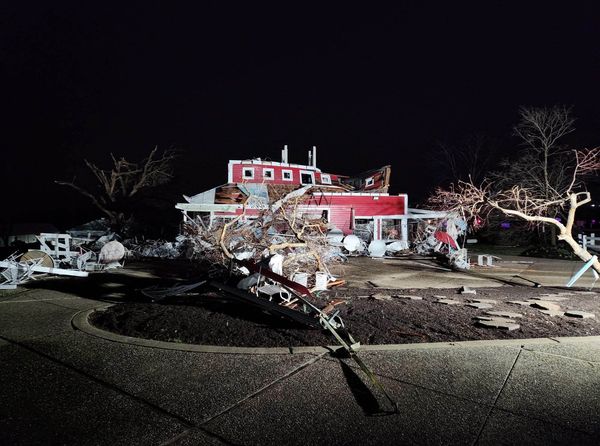
Monarch butterflies (Danaus plexippus) are some of the most iconic insects around. But they are uniquely threatened and earlier this month, Mexico’s Commission for National Protected Areas announced that the number of monarch butterflies has dropped to frighteningly low levels. The monarch butterfly population returning to their winter habitats fell by 59% this year, making it the second lowest level since scientists started keeping records.
The Mexican government is not alone in noticing the precipitous decline in monarch butterflies. The Xerces Society for Invertebrate Conservation — a group that specializes in protecting insects, arachnids, crustaceans and other arthropods — warned in its annual Western Monarch Count that they only counted 233,394 butterflies at 256 overwintering sites compared to last year’s total of over 330,000 butterflies. To put this in perspective, the researchers explained in a press statement that this is "just 5% of their population numbers in the 1980s, when low millions were common."
Emma Pelton, a senior endangered species conservation biologist and Western Monarch Lead at the Xerces Society, told Salon that she has observed firsthand "the bottom drop out" of western monarch populations. While the news cycle is focused on the most recent numbers from experts, Pelton witnessed a dramatic example of this same phenomenon years earlier.
"When I started this work a little over eight years ago, we knew the population wasn't as good as in the past," Pelton explained. "But we thought, 'OK, this is our new normal. We have low hundreds of thousands of butterflies.'"
Yet in 2018, Pelton noticed that sites which had once been "dripping with monarchs" were eerily vacant, with some having monarch populations limited to one branch.
"It was two orders of magnitude; we really dropped from 300,000 give or take to 30,000 give or take in a single year," Pelton said.
"It's very visceral to say, 'They used to coat this whole area and now they're on a single branch, or they're really scattered.' I mean it's pretty shocking and it was pretty potent. And we were actually out there with a reporter and I remember we were all saying, 'Ooh, this does not look good. This does not look like what it's supposed to look like.'"
Does this mean the monarchs are doomed? Probably not. Pelton is not worried about monarch butterflies going entirely extinct because "there are small populations in tons of countries all over the world." Yet when it comes to the monarch butterflies indigenous to the United States — and, in particular, the ones renowned for migrating through the seasons — experts do indeed fear that "we're going see this collapse of this amazing phenomenon. We are still probably going to have monarchs. They're just going to be a shadow of what they were."
Regardless, many examples across nature indicate that outcomes other than extinction can still have widespread impact across ecosystems. For example, in the U.K., gardening practices that diminished the red ant population had an outsized impact on the endangered large blue butterfly (Phengaris arion). Scientists have been able to restore the populations of these butterflies by helping out the ant as well, as the butterflies are actually parasitic to these ants and need them to complete their life cycle. Losing monarchs could also have ripple effects across nature.
There are several explanations for the fall in monarch butterflies, all of them linked to human activity. First, there are the rising temperatures caused by climate change and burning fossil fuels. Gloria Travera, the conservation director at Mexico’s Commission for National Protected Areas, told The Guardian that the butterfly population decline has "a lot to do with climate change.” The planet's increased temperature causes droughts, extreme heat and storms, all of which make it harder for the butterflies to survive in their normal environment. On some occasions, Travera and her team could not find any butterflies on their traditional wintering grounds.
“The monarchs looked for other sites,” Tavera observed.
Monarch butterflies also possess unique traits that make them particularly vulnerable to climate change. Their migration, habitation and reproductive habits all heavily rely on temperature, and the butterflies themselves are very sensitive to any fluctuations. They also rely on a single plant for food, milkweed, and as climate change makes milkweed less nutritious and more scarce, butterflies consequently suffer.
Yet factors other than climate change also inflict suffering on butterflies. As Pelton explained, habitat destruction and pesticide use are also major contributors to the declining butterfly populations.
"We've been destroying habitat, the milkweed they use, the nectar plants they use, as well as their overwintering habitat in Mexico and California," Pelton said. "We have a lot of strong evidence that that's the biggest issue, along with kind of broad pesticide contamination and the use of herbicides and insecticides."
While this may seem disheartening because it means monarch butterflies face additional challenges, Pelton sees a silver lining in that cloud — some of these problems can be fixed by humans with relative ease.
"We can choose to reduce pesticide use, we can choose to protect or restore habitat," Pelton pointed out. "Climate change, we're not going to stop that in a year. This is going to take time. I think of it as a little bit a lifeboat analogy: we need to keep monarchs afloat while we address climate change, and the things we can address are habitat and pesticides."
In fact, Pelton reported that a lot of people have expressed interest in doing their part to see monarch butterflies.
"We get emails every day from people that are gardeners who say, 'I want to do the right thing. What milkweed can I plant? How can I talk to my community about this? Do you have educational materials? How can I get pesticides reduced in my community?'" Pelton said. Monarch butterflies are among the most famous arthropods in the world, and humans seem to want to keep them around. The question is whether they can rise to the challenge.







